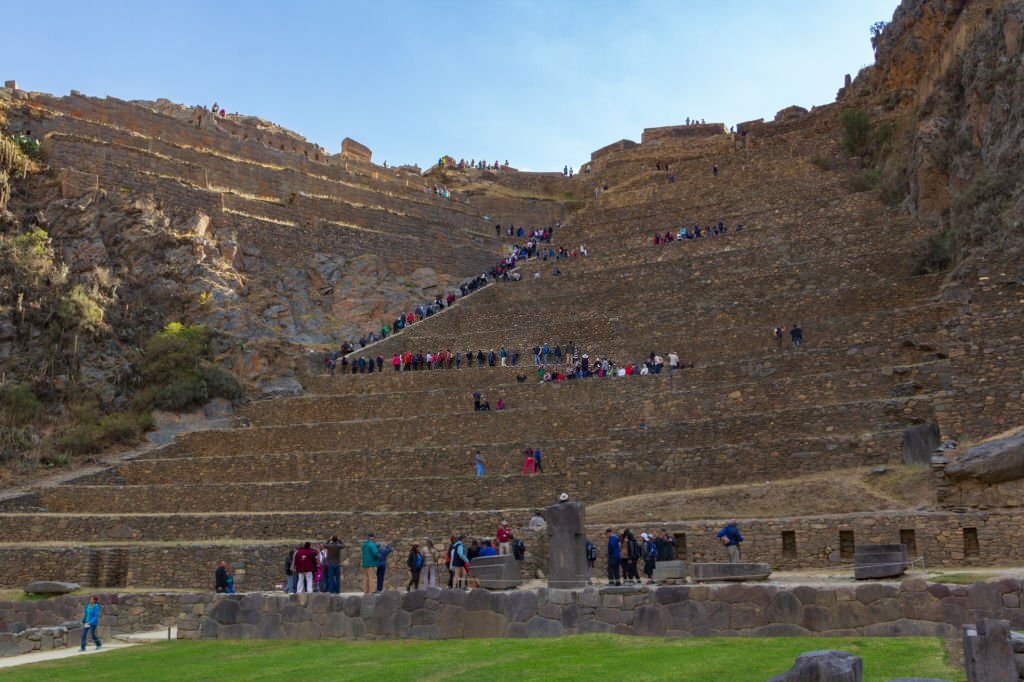In the high-altitude landscapes of Peru, where the Andean mountains meet the sky, lies a place shrouded in mystery and steeped in history – Chinchero and its hauntingly named “Death Stairs.” This archaeological site, nestled in the Sacred Valley, unveils a narrative of ancient civilizations, Inca engineering prowess, and the enigmatic allure of structures that echo with the whispers of the past.
1. Chinchero’s Ancient Splendor:
Chinchero, located about 30 kilometers from Cusco, was once a significant center in the Inca Empire. Today, its ruins stand as a testament to the advanced engineering and architectural achievements of the Inca civilization. Chinchero was primarily an agricultural and religious hub, boasting expansive terraces, ceremonial platforms, and intricate stone structures.
2. The Myth of the “Death Stairs”:
The term “Death Stairs” may evoke a sense of foreboding, but it is essential to understand the historical context surrounding this intriguing structure. The stairs, crafted with precision and care, served as a passage for those ascending and descending the elevated terraces. The name “Death Stairs” is more a reflection of the challenging climb than any morbid historical event.
3. Engineering Marvel:
The Death Stairs showcase the Inca’s remarkable engineering skills. Carved into the natural landscape, the stone steps are seamlessly integrated into the terraced design, providing efficient access to different levels of the agricultural terraces. The stairs also demonstrate the Inca’s understanding of water management, as they feature channels to channel rainwater away from the terraces.
4. Agricultural Ingenuity:
Chinchero’s agricultural terraces, intricately connected by the Death Stairs, reflect the Inca’s ingenious approach to farming in the challenging Andean environment. The stepped terraces not only maximize the use of arable land but also provide effective drainage and prevent soil erosion. This agricultural innovation was crucial for sustaining the Inca population.
5. Ceremonial Significance:
Beyond its agricultural purpose, Chinchero held ceremonial and religious importance for the Inca. The site features a massive stone wall, the remnants of an Inca temple, which served as a sacred space for rituals and ceremonies. The Death Stairs, as a pathway connecting different levels of the site, played a role in the ceremonial practices conducted in this elevated realm.
6. Preservation Challenges:
While Chinchero’s archaeological wonders continue to captivate visitors, the site faces challenges related to preservation. Weathering, erosion, and the impacts of tourism pose threats to the integrity of the structures. Conservation efforts are crucial to ensure that future generations can continue to marvel at the Death Stairs and the broader archaeological complex.
7. Cultural Heritage and Tourism:
Chinchero is not only a testament to the Inca’s engineering prowess but also a living cultural heritage. The site attracts visitors seeking to connect with Peru’s rich history and the mystical allure of the Andean landscapes. Balancing tourism with preservation efforts is a delicate task, as the site’s popularity brings both opportunities and challenges.
8. Mysteries Unveiled:
While the Death Stairs of Chinchero are a tangible reminder of the Inca civilization, they also leave room for mysteries and unanswered questions. The intricacies of Inca construction methods, the specific rituals conducted on the terraces, and the cultural significance of certain architectural elements continue to be subjects of archaeological inquiry and exploration.
In conclusion, Chinchero’s Death Stairs beckon travelers to step into the footsteps of ancient civilizations and explore the wonders of the Inca Empire. Beyond the ominous name lies a story of agricultural innovation, engineering brilliance, and cultural richness. As visitors ascend the Death Stairs and traverse the terraces, they embark on a journey through time, unraveling the mysteries of Chinchero and paying homage to the ingenuity of the Inca people who once called this elevated realm home.
Book your ticket here.










Comment (0)